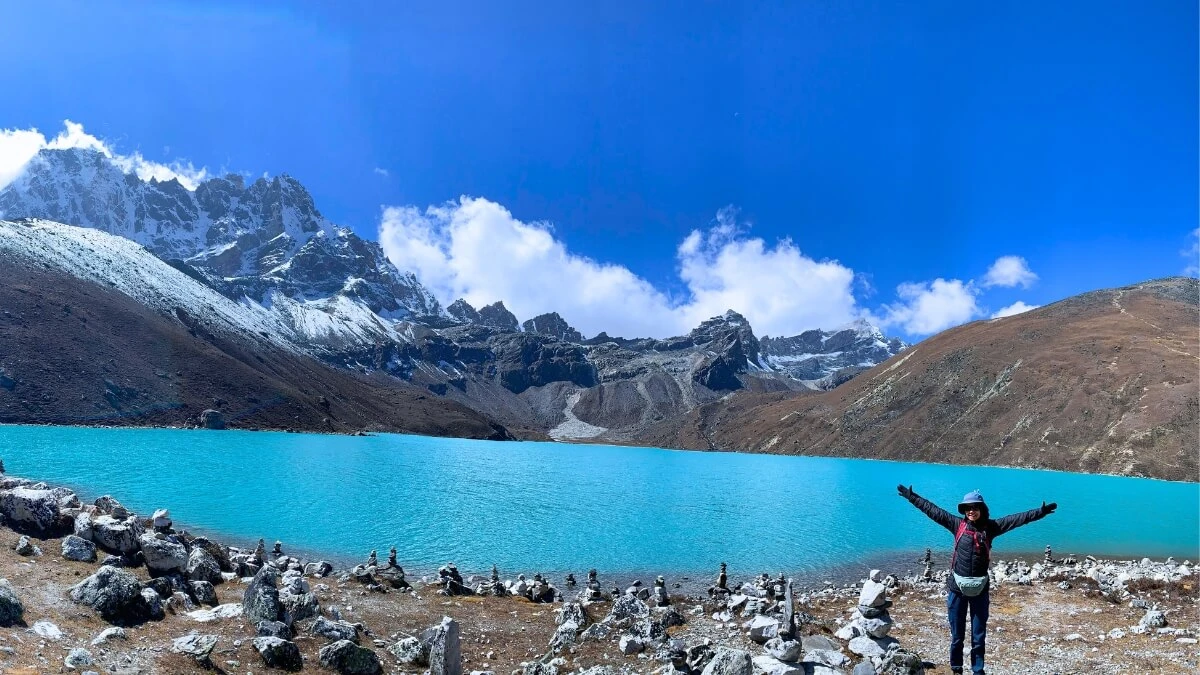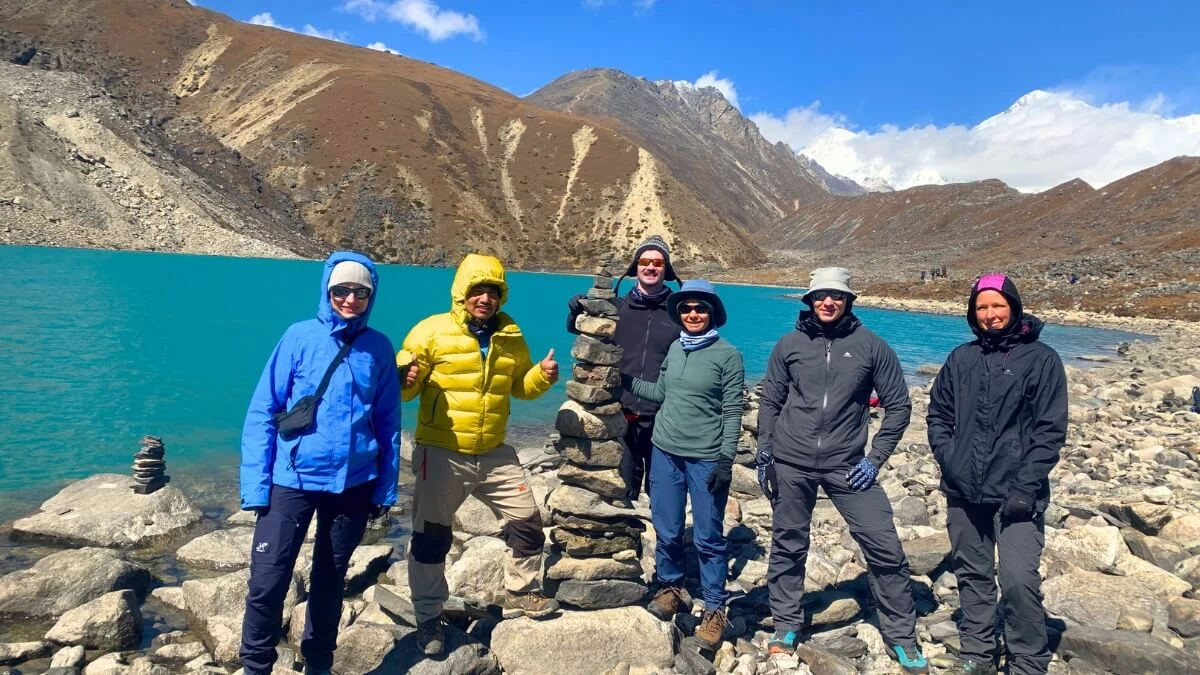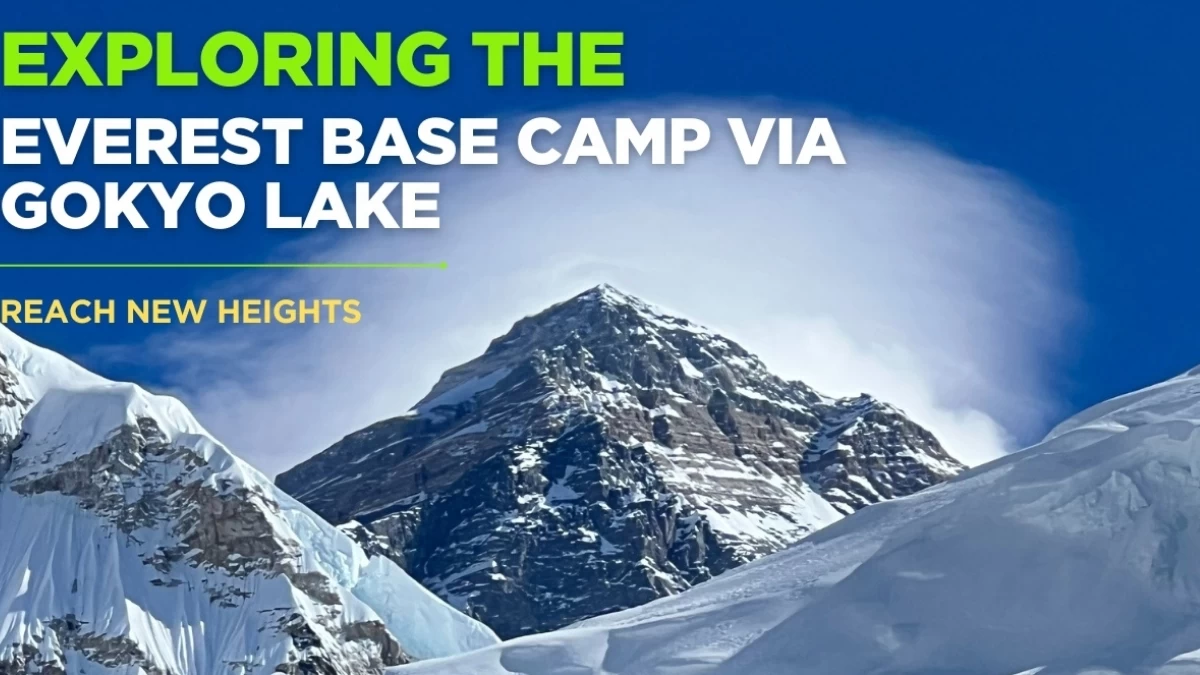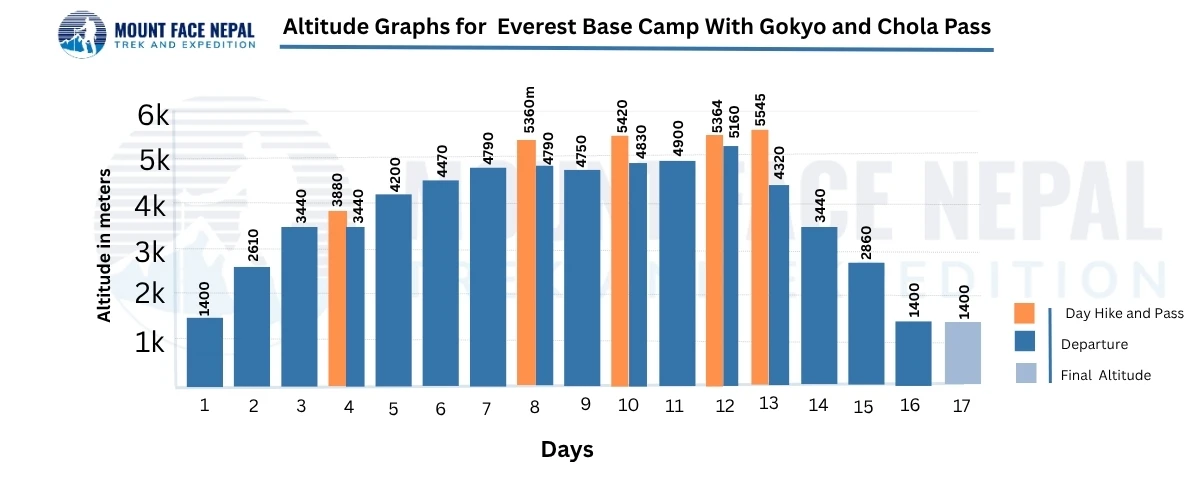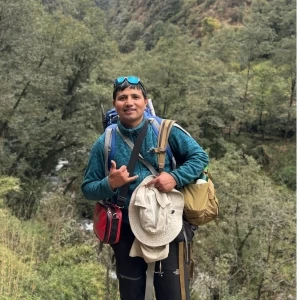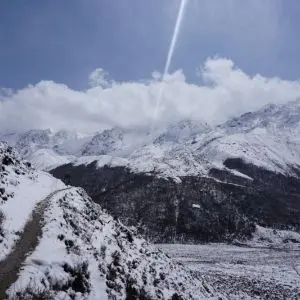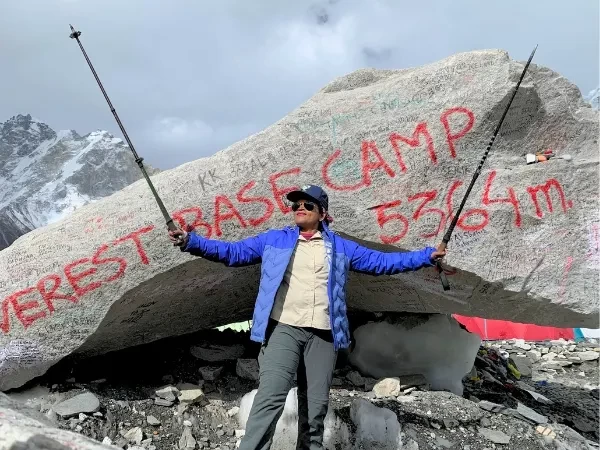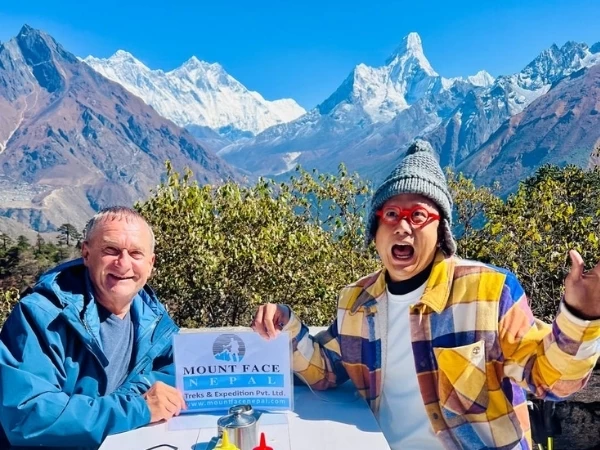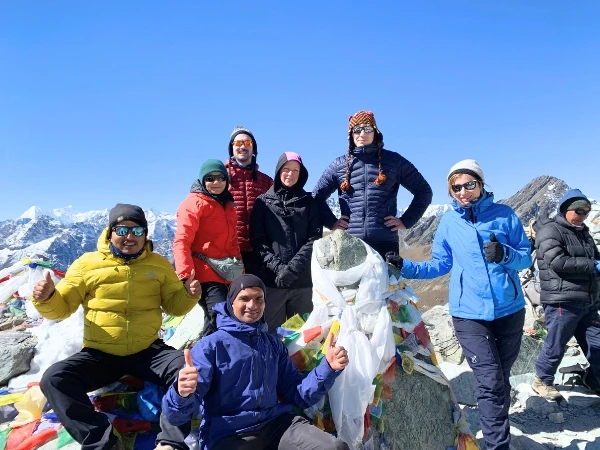Everest Base Camp with Gokyo Lake and Cho la Pass Trek is the Combination of a large part of the classic Everest Base Camp trek route. It includes the relatively unexplored wonders of the Everest region and takes you around the wonderful valley known as Khumbu.
The sparkling azure Gokyo Lake along the Gokyo valley lies within Khumbu. Gokyo village is one of the untarnished treasures of Nepal. This trek will bring you over the winding path between forgotten valleys, winding around tranquil lakes and traditional villages. Enjoy the breathtaking adventure through spectacular scenery along the trails and Gokyo Lakes and ultimately the base camp of Mt. Everest.
The Gokyo-Everest Base Camp Trek offers you the rare chance to discover the miraculous hidden Gokyo valley in Khumbu. You will be brought to confront with the jewels of the Gokyo Lakes: Gokyo Ri, and the Fifth Lake - the grandeur of which overlooks a stunning view of majestic Everest. Gokyo Valley Trekking comprises of the unbeaten and splendid path to Everest Base Camp.
Gokyo Valley is a treasure of the gorgeous Gokyo Lake trekking, the famous Cho La pass, the large Ngojumba Glacier, the Dudh Koshi River the viewpoints of Gokyo Ri, Kala Patthar and Everest Base Camp itself. This trek features the mountains and glaciers that create diverse landscapes and panorama.
It is dominated by the high peaks corresponding deeply-incised valleys. Sagarmatha National Park has a valley with the world’s highest human settlements, ecologically characteristic flora and fauna. The national park has been enlisted in the world heritage sites in UNESCO. You will also get the ideal opportunity to explore the rich Sherpa culture.
Throughout the Gokyo Lake Trekking, you will be passing by so many enchanting views and all these have set Everest Base Camp Trek via Gokyo a different status among the courageous souls.
You will come across many suspension bridges and colorful Buddhist prayer flags that decorate the whole valley. The lifestyle of the inhabitants of the Gokyo valley has not been influenced by any modernization. It still remains authentic and unspoiled.
Gokyo Trek, also known as Gokyo Lake Trekking is an eventful trek with a continuous exploration of underlying beauties with the Himalayas.
Other than the classic treks, ample opportunities await you to peek into soaring mountains while residing in the lap of the world’s highest peaks. Experience this in the Everest Base Camp Trek with Gokyo Lake & Cho La Pass, a journey that offers unparalleled vistas and breathtaking moments.
This trek reaches high altitudes quite quickly. Therefore, it is important to take the suggested acclimatization days. You also need to be aware of signs of altitude sickness and its precautions so that you can avoid any serious mishaps. For more information please refer to the health and safety section.
Everest Marathon is also held in this region every year on 29th May. Everest Base Camp Trek, Everest View Trek, Gokyo Lake Trek, Chola Pass Trek & Everest Helicopter Tour are the best selling packages in 2025 by MFN Group.
What is the Difficulty Level of the Everest Base Camp with Gokyo Ri?
The Everest base camp through Gokyo Ri trek is a high-altitude trek which is said to be strenuous and suitable only to trekkers with prior experience or with good physical fitness. It features high uphills, long days on foot, and glacier crossings, the most famous one at Cho La Pass. It is a more difficult trail that is difficult because of the altitude in comparison to the regular EBC route.
The trail of the Gokyo Everest Base Camp Trek is clear and jagged, too. Passes such as Cho La may be icy and steep, so one should be cautious and carry equipment on such passes. There are more slippery or even exposed areas near glaciers or snowfields, which means that a person on Everest has to have a guide who already knows the trail conditions.
Another element is that of uncertain weather. Lukla flights are sometimes delayed by fog or wind, and unexpected snowfall along Cho La Pass may slow down the movement. Planning flexible travel dates helps manage weather and flight cancellation risks.
The second key issue is altitude. The high-altitude symptoms might be experienced towards Gokyo Ri and EBC (over 3,500 meters) because trekkers are likely to experience symptoms in these areas. Proper pacing, hydration, and rest days are key for altitude sickness prevention in Nepal. This trek comes with a challenging and rewarding trek through the Himalayas.
Best Time to Trek Everest Base Camp and Gokyo Lakes Trek
The Everest Base Camp via Gokyo Lakes trek is best undertaken during the pre-monsoon (spring) and post-monsoon (autumn) seasons. The best time for Everest Base Camp trek via Gokyo Lakes is from late March to May and late September to November. The weather during these months is mostly clear, giving beautiful views of the mountains, and the trekking environment is good. The temperatures are bearable, and the skies are not so cloudy, which would make it ideal as far as photography and sightseeing are concerned.
The spring also offers rhododendrons in bloom and a lot of greenery along the trails, which makes the trek natural. Autumn is often considered the most popular season for adventure treks in Nepal 2025 because of its stable weather and clear skies. The trekkers must, however, be well prepared in case of any sudden changes in the weather in the high altitude trekking in Nepal.
Winter trekking can be done, but at colder temperatures and snow, especially in Cho La Pass. Summer or rainy months (June to August) should also be avoided because of excessive rains, slippery paths, and the chances of landslides are high. The weather trends in Everest during these months are unfavorable for trekking.
Selecting the right season also makes it safe, ensures better wilderness conditions, and the entire trek becomes enjoyable. Planning your trip during these peak months also allows you to avoid heavy crowds on the Everest Base Camp via the Gokyo Lakes trail while still experiencing the majestic beauty of the Himalayas at its best.
Permits for Gokyo to EBC Trek
To make sure that your journey is legal, there are multiple official documents and papers you need to obtain to visit and trek to the Everest Base Camp through Gokyo Lakes. The most important is the Sagarmatha National Park Trek permit, which allows access to the protected park area surrounding Everest. This permit is also meant to conserve the natural environment, and this is also meant to control tourism in this delicate ecosystem. It has to be taken at the beginning of the trek and revisited at several checkpoints on the way.
Trekkers must also have a TIMS (Trekkers Information Management System) card, which helps to keep trekkers safe and trace their movements. Both the Sagarmatha National Park Trek permit and the TIMS card can be arranged in Kathmandu or at the trekking agencies, usually before the trek begins.
Trekkers must also have a TIMS (Trekkers Information Management System) card, in addition to the park permit, which also helps to keep trekkers safe and trace their movements. These trekking permits for EBC via Cho La Pass are essential for government regulations and ensuring safety in this remote, challenging area. All permits are necessary in order not to get a fine or to face the hazard of disrupting the trek.
Following government trekking regulations helps protect the environment and supports local communities. Remember your permits when you are on the trek because police will always check the permit at the villages and checkpoints staged along the trek, mainly on this route of Everest Base Camp via Gokyo Lakes.
Why You Should Book with Mount Face Nepal Treks and Expedition
The Everest Base Camp Cho La Pass trek with Mount Face Nepal Treks and Expedition is a short but promising trip by all terms that is safe, memorable, and well-organizedRemote Himalayan trekking. With years of experience operating in the Himalayas, our team of licensed guides and support staff is fully trained in safety and responsible trekking, ensuring your health and satisfaction are the top priorities throughout the trek.
We provide the best prices guaranteed without compromising service quality. Chola Pass Trek Cost and Itinerary are open and adjustable, and will provide good value and accommodation to both fit and inexperienced trekkers. Our packages would cost you based on your comfort and choice, whether you are on your own or you are in a group.
At the centre of our activities is our well-looked-after and happy team of staff. With the help of decent salaries, equipment, and insurance, we see to it that all local employees are well motivated and value working as one family, where every guest is our own. Throw in 24/7 support, rescheduling at your comfort, and accommodations of quality in nature, and the superiority of Mount Face Nepal becomes apparent.
We invite you on a trust-based, well-cared, and competent Himalayan trip.
